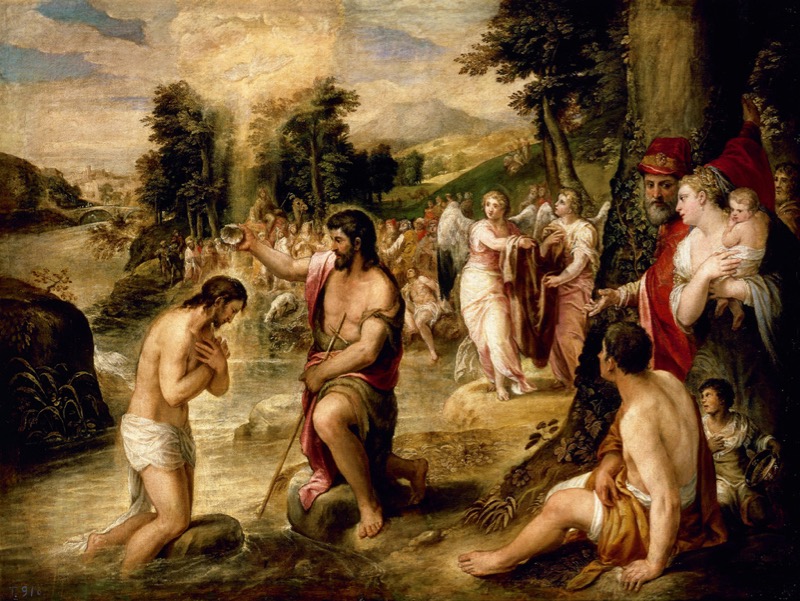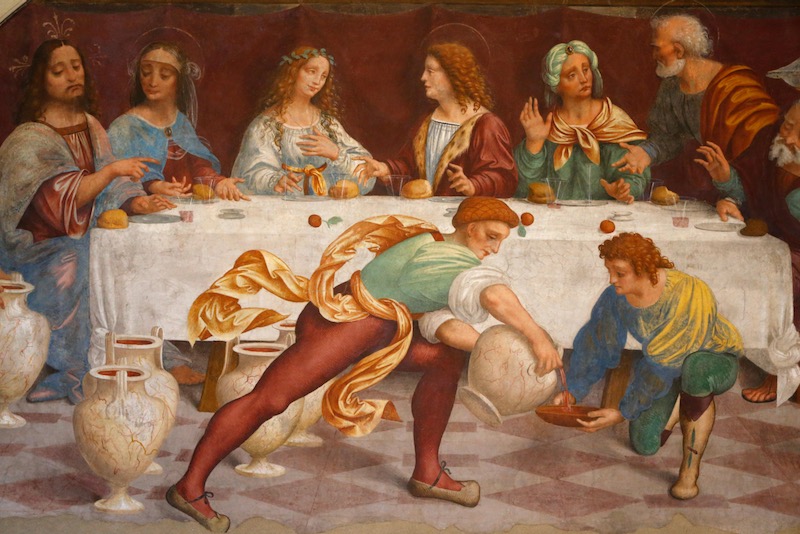From a literary point of view, the wedding feast at Cana is a strange beginning. Weddings are usually positive endings. So the reader is meant to infer from the fact that John begins his gospel narrative with a wedding that the good ending has already happened. The miracle at the wedding feast is a homely preview, as it were, complementing the gospel’s majestic prologue, and everything else written here is to be viewed through the prism of that happy outcome. The ending is not, of course, this particular wedding, but Jesus Himself, risen and glorified; and the story of the miracle at the wedding feast is a sort of anticipated resurrection story.
That’s why it begins with the words: “On the third day”, which was, by the time this gospel was written, established code for the day of resurrectio’. So, in John’s understanding, this cheering account of Jesus producing wine from water (thereby saving the groom’s reputation as well as ensuring that the party would go on for a very long time), firmly fixes the perspective that underpins his whole gospel and the Gospel – the Good News – as such.
Why else would John go to the trouble of specifying two salient details about the wine, namely, the quality and the quantity? Each pitcher held 800 litres. In more familiar terms, that’s a breathtaking 88 cases or 1,066 bottles of the first-century Palestinian equivalent of Château Pétrus. John speaks of this miracle as the first of the ‘signs’ by and through which Jesus disclosed his glory. And here and throughout the rest of his gospel, John says of those who witnessed these signs that “they saw and believed”. Their eyes were opened, in other words, and as a result, they, like the water, were changed. So, there are two miracles here: the transformation of water into wine and the transformation that takes place in the disciples (and, by implication, in us), when the 2 glory of God’s love is borne in upon us by the gift of faith, represented on this occasion by the gift of an endless supply of wine. But John is making an additional and crucial point. The transforming, life-changing glory of God doesn’t appear only in splendour on the clouds of heaven or within the confines of the Temple or even the synagogue. The glory of God is disclosed from within our experience, from within our relationships, from within the whole of created reality, even at an otherwise insignificant village wedding feast.
And notice also: it happens in response to his mother’s plea. The wedding feast at Cana is one of only two stories in John’s gospel involving the Mother of Jesus – interestingly, John never calls her ‘Mary’. This one comes at the beginning of his gospel, the other comes at the end, at the Crucifixion. And both stories involve enigmatic dialogues, stressing the unique relationship which Jesus has with his mother, as we all do with our own mothers, thus powerfully affirming Jesus’ genuine humanity. And there’s a further layer of symbolism: the water turned into wine wasn’t just any old water, but specifically, we’re told, the water prescribed by the Law for ritual purification. John’s point here is that Jesus is Himself the fulfilment of the Law, who now surpasses every other means of access to God, religious or otherwise, because He is God. Life in abundance, in other words, is to be found, not in the Law, not in any law, except the ‘New Law’: “A new law, I give you, love one another, as I have loved you.” This ‘law’, the ‘law’ of the Spirit, John (and Aquinas) teaches, is written on our hearts, not on tablets of stone.



 Loading ...
Loading ...
What do you think?
You can post as a subscriber user ...
User comments (0)